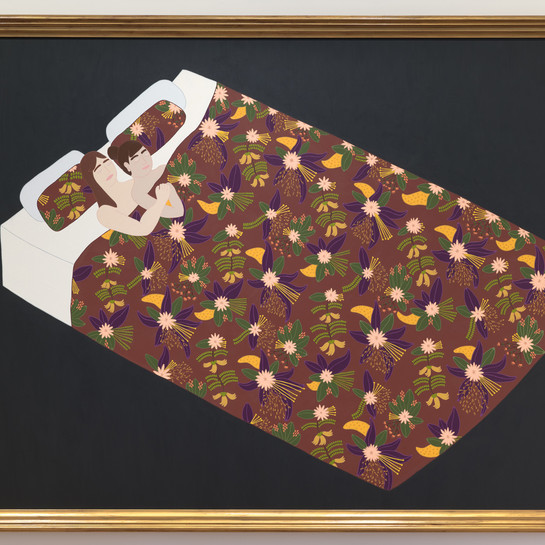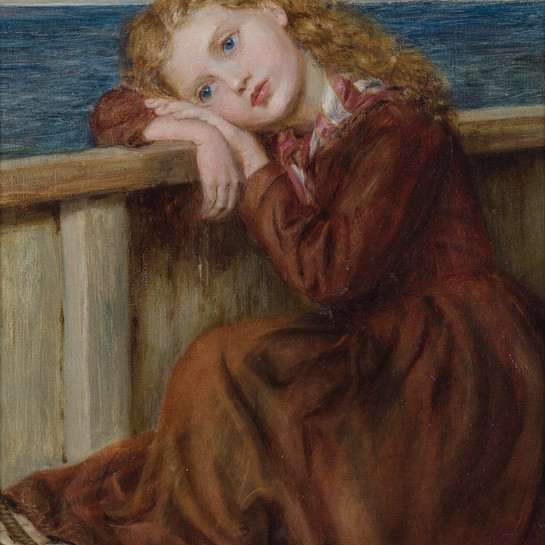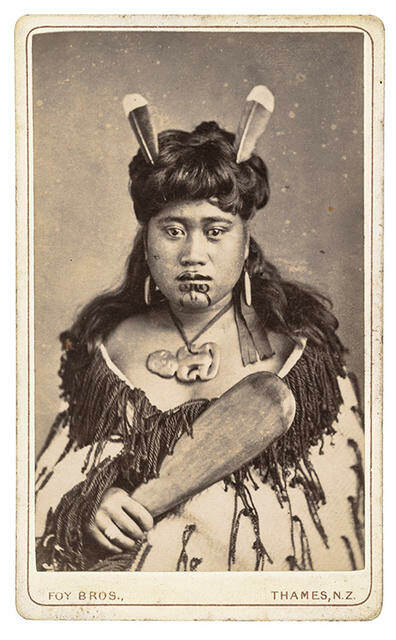Foy Brothers
active 1872-1907
Puahaere, Rangatira of Ngāti Pāoa
- c. 1872-c. 1878
- carte-de-visite albumen photograph
- Purchased 2014
- 103 x 62mm
- 2014/004
Tags: capes (outerwear), clubs (weapons), feather (material), Māori (culture or style), moko, monochrome, pendant earrings, pendants (jewelry), people (agents), portraits, tattoos, women (female humans)
Puahaere Te Wherowhero (also known as Ema Te Aouru) was the daughter of the second Māori King, Tāwhiao Tūkāroto Matutaera Pōtatau Te Wherowhero and his third wife Aotea. Tāwhiao is said to have disapproved of Puahaere’s marriage to James Mackay, a Pākehā government official who left his wife and family to live with her. Echoing an experience common to many Māori at that time, she later faced numerous land ownership disputes in court, eventually facing bankruptcy and threats of imprisonment. Her newspaper obituary in 1901, however, remembered her as: [O]ne of the most noted chieftainesses of the district, who […] took an intelligent interest in the improvement of the conditions prevailing amongst the Maoris, and always gladly hailed the advent of anyone who had a comprehensive scheme for the advancement of the natives.Brothers James and Joseph Foy opened a thriving photographic portrait studio in the goldmining town of Thames in the Coromandel in 1872. Māori sitters were typically photographed in customary clothing and adornment to increase commercial appeal (most Māori by this time wore European-style clothing). This photograph also became the basis of an oil portrait by Gottfried Lindauer. (Te Wheke: Pathways Across Oceania, 2021)
Exhibition History
James Joseph Foy (1844–1890) and Joseph Michael Foy (1847–1923) operated a photographic business in Thames in the Coromandel between 1872 and 1907. The brothers reached New Zealand as small boys in 1849; their father was a London police sergeant who joined the New Zealand Fencibles, a military unit hired to protect the fledgling British town of Auckland from attacks by discontented Māori. Foy Brothers photographed many local Māori sitters and utilised a range of customary adornment items as props to increase their portraits’ saleability and supposed authenticity (most Māori in the 1870s wore European-style clothing). Puahaere Te Wherowhero (1840-1901), also known as Ema Te Aouru, was the daughter of the second Maori King, Tawhiao Potatau Te Wherowhero and his wife Aotea. Puahaere was a chieftainess of Ngāti Paoa through her mother Aotea (also known as Harata Patene), a half-sister of Patara Te Tuhi. This photograph became the basis of a portrait by Gottfried Lindauer.


